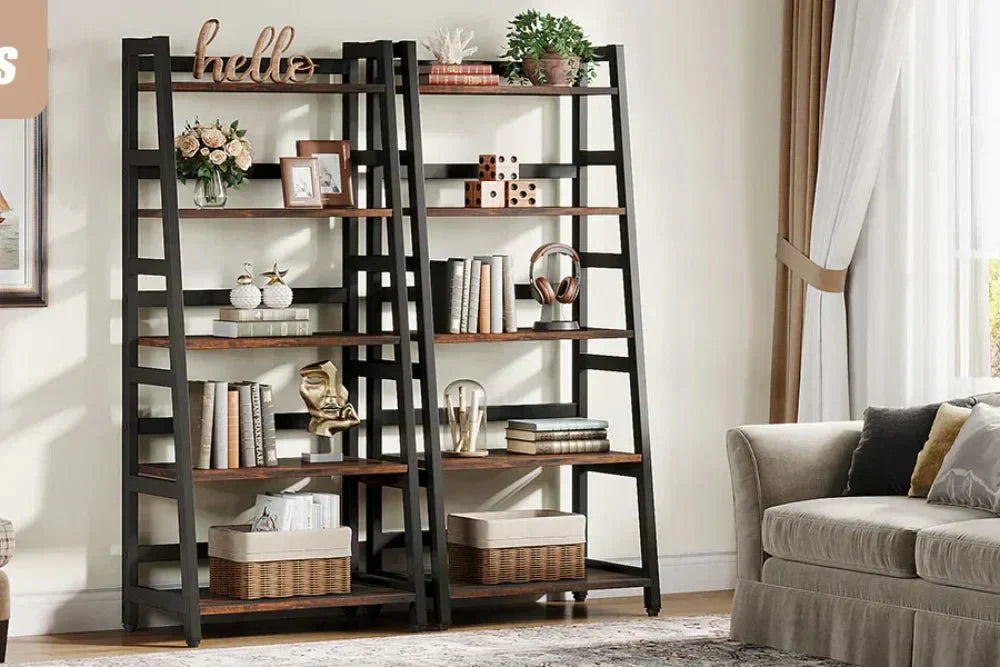Choosing eco-friendly furniture is more than a purchase—it’s an investment in your wellbeing, your home, and the environment. As awareness grows around climate impact and healthy living, sustainable furniture has become a meaningful way to reduce your footprint while enhancing your daily life.
In this guide, we’ll help you understand what makes furniture truly eco-friendly, what materials and certifications to look for, and how to choose pieces that align with a greener lifestyle.
What Is Eco-Friendly Furniture?
Eco-friendly furniture—also known as sustainable or green furniture—is designed and manufactured to minimise environmental harm. This involves responsible sourcing, ethical production, reduced chemical use, and designs that prioritise durability and end-of-life recyclability.
True sustainability in furniture looks at the entire lifecycle:
- Sourcing: Using materials from well-managed forests, recycled content, or rapidly renewable resources
- Production: Energy-efficient manufacturing, waste reduction, and fair labour practices
- Lifespan: Building products that last for years, not just seasons
- Disposal: Designing for repair, disassembly, or recycling
This holistic approach distinguishes truly sustainable furniture from products that are simply marketed as “green”.
Key Sustainable Materials in Furniture
Responsibly Sourced Wood:
Wood certified by the Forest Stewardship Council (FSC) or PEFC ensures it comes from responsibly managed forests. Reclaimed wood—sourced from old buildings, shipping pallets or barns—is another excellent choice, giving existing materials a new life.
Rapidly Renewable Materials:
- Bamboo: Grows quickly, requires no replanting, and is both strong and lightweight
- Cork: Harvested without harming trees; resistant to moisture and ideal for tabletops or accessories
- Rattan: A durable, flexible material often used in woven furniture designs
Recycled & Upcycled Materials:
- Reclaimed wood: Adds character and history to furniture while reducing waste
- Recycled metal: Significantly lowers the carbon footprint of metal furniture components
- Recycled plastics: Often used in outdoor furniture, diverting waste from landfills and oceans
- Upcycled materials: Creative reuse of items like industrial parts or textiles into unique statement pieces
Innovative Eco-Materials:
- Mycelium leather: Grown from fungal mycelium, this bio-based material replicates the texture and durability of traditional leather—without animal involvement or toxic tanning processes.
- Algae-based foam: A promising replacement for petroleum-derived foams, algae-based cushioning is made from rapidly renewable aquatic biomass. It offers comparable comfort for sofas and mattresses while significantly cutting carbon emissions and dependence on fossil fuels.
- Plant-based composites: Waste from farming—such as rice husks, coconut coir, and hemp—is being transformed into sturdy, eco-conscious composite materials. These are increasingly used in tabletops, cabinet panels, and decorative elements, turning what was once discarded into beautiful, functional surfaces.
Healthy Finishes:
Look for low-VOC or water-based stains, paints and adhesives. Natural finishes like beeswax, linseed oil and shellac offer beautiful, non-toxic protection for wood surfaces.
Benefits of Eco-Friendly Furniture
- Better indoor air quality: Low-VOC finishes and adhesives reduce off-gassing and chemical exposure
- Durability: Well-made sustainable furniture lasts longer, reducing waste over time
- Resource conservation: Supports recycling, reduces deforestation and encourages circular economies
- Ethical production: Often aligns with fair labour practices and safe working conditions

Certifications to Trust
- FSC & PEFC: Ensure wood comes from responsibly managed forests
- CARB compliance: Indicates low formaldehyde emissions
- GREENGUARD: Certifies low chemical and particle emissions into indoor air
- Cradle to Cradle: Assesses overall sustainability across product lifecycle
These labels help you identify genuinely sustainable products and avoid “greenwashing”.
How to Choose Sustainable Furniture in the UK
- Look for certifications – Trust independent labels like FSC over vague claims
- Check materials – Opt for solid wood, recycled metal or natural fibres over plastic-based composites
- Prioritise durability – Choose timeless designs and robust construction that will last
- Support transparent brands – Companies that share their sourcing and production practices are often more committed to sustainability
- Consider second-hand or vintage – Giving existing furniture a new home is one of the greenest choices
Final Thoughts
Eco-friendly furniture allows you to furnish a home you love—with a clear conscience. By choosing well-made, transparently sourced pieces, you’re not only creating a healthier living environment but also supporting a more sustainable future.
Explore Tribesigns’ collection of thoughtfully designed furniture for stylish, durable and greener choices suited to modern UK homes.


